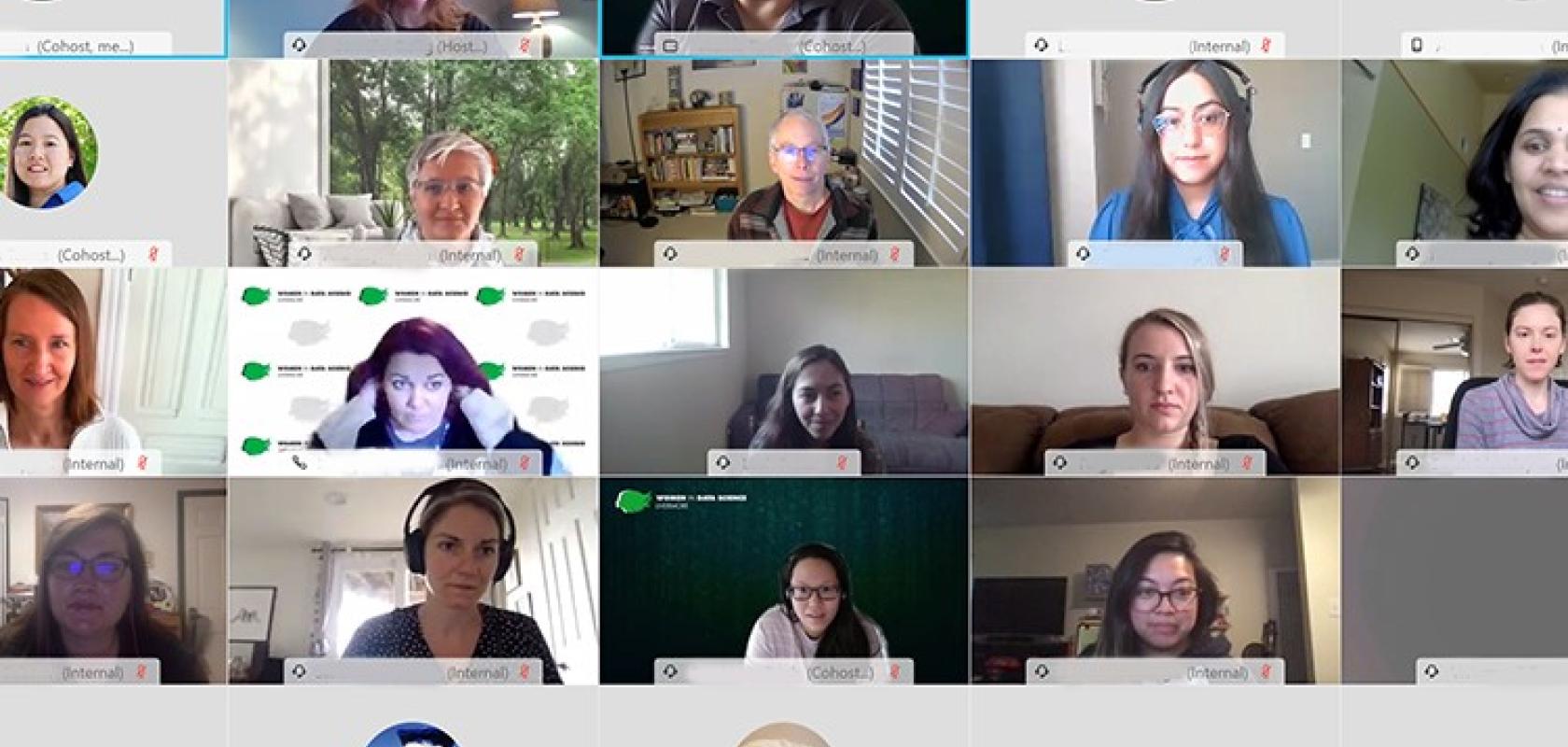Coinciding with International Women’s Day on March 8, Lawrence Livermore National Laboratory hosted its 4th Women in Data Science (WiDS) regional event which brings women together to discuss successes, opportunities and challenges of being female in a predominantly male field.
The Lab’s first-ever virtual WiDS gathering attracted dozens of LLNL data scientists as well as some from outside the Lab and featured speakers, a career panel and breakout sessions where women could network and discuss mentoring and career advancement.
LLNL Bioinformatics Group Leader and WiDS Livermore Ambassador Marisa Torres told attendees: ‘If some of you have experienced being literally the only woman at the table, or the only woman on a panel, I’m sure you can agree it’s quite special to have an event centred on women in data science. We’re here to celebrate a lot of accomplishments.’
Center for Applied Scientific Computing (CASC) Deputy Division Leader Ana Kupresanin addressed morning attendees, discussing her path from a high school student in her home country of Croatia to becoming a statistician at LLNL, where she focuses on the uncertainty quantification of predictive models for the weapons program. Advances in machine learning (ML) and artificial intelligence (AI) are helping accelerate scientific discovery, and CASC researchers work with the scientific community to build a firm theoretical foundation for ML and AI, with a particular emphasis on the Lab’s broad mission space.
Kupresanin stated: ‘The nature of scientific computing is changing with the rapid rise of data science and fundamental physical limitations imposing challenges on computer hardware,” Kupresanin said. “This not only presents new challenges, but offers opportunities in creating new algorithms and developing improved workflows that will more tightly couple experiment, simulation and theory.’
Kupresanin, who is heavily involved with academia through her role with the Predictive Science Academic Alliance Program, and with the University of California through her work as a Data Science Institute (DSI) council member, said the broader adoption of ML is creating greater demand for statisticians and data scientists, positions that could be filled by women currently seeking their degrees.
‘These students are bold, they’re not afraid to ask questions and try new methods, and they think outside the box,’ Kupresanin said. ‘This new generation is really excited about what they can do to change the world and they have enormous energy.’
Organised by LLNL ambassadors, the Livermore WiDS event also featured a speed mentoring session moderated by LLNL computer scientist Stephanie Brink, a Howspace collaborative platform for chatting, virtual breakout rooms and a trivia game. Throughout the day, attendees also tuned into the worldwide livestream of talks and panels hosted by Stanford University.
Torres led the WiDS Livermore organising committee, which also included Silva, Brink, Saini, Cindy Gonzales, Jennifer Bellig and Holly Auten.
Livermore was one of more than 200 WiDS events held in more than 60 countries in conjunction with the conference, the first-ever virtual WiDS spanning an entire 24 hours. The conference featured panels and talks by women data scientists from all over the world, including keynote addresses by UC Berkeley professor Shafi Goldwasser on the impact of cryptography on machine learning research and by Google principal scientist Fernanda Viégas on data visualisation in science and art.
For more on the Data Science Institute, visit the LLNL website which includes research topics, news and information on the Open Data Initiative. For a full rundown of the recent WiDS event check the full news report from LLNL.


